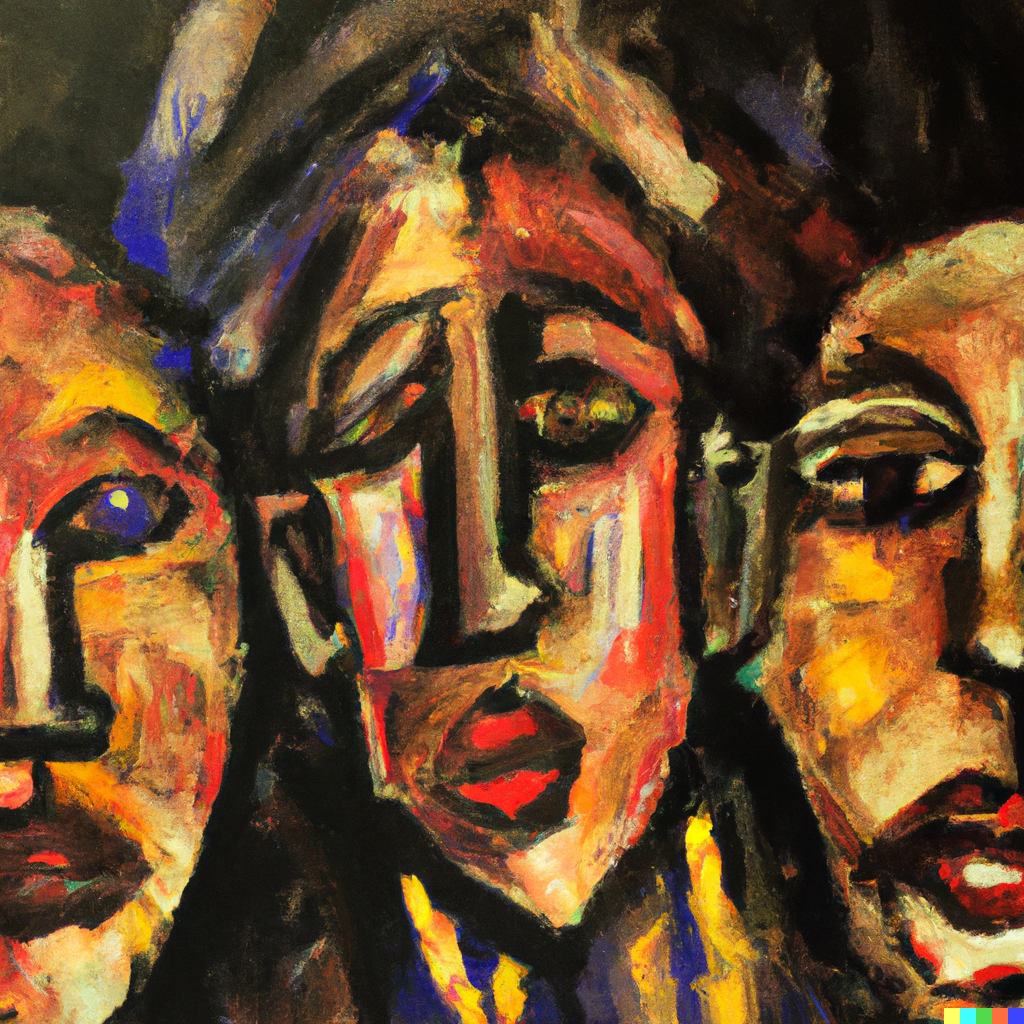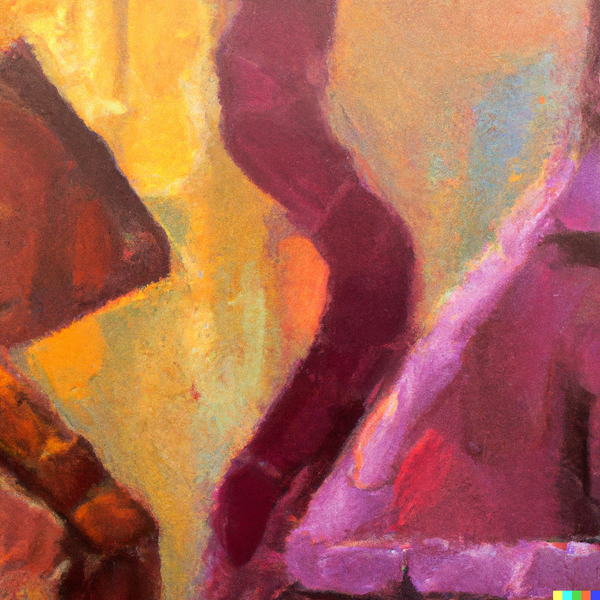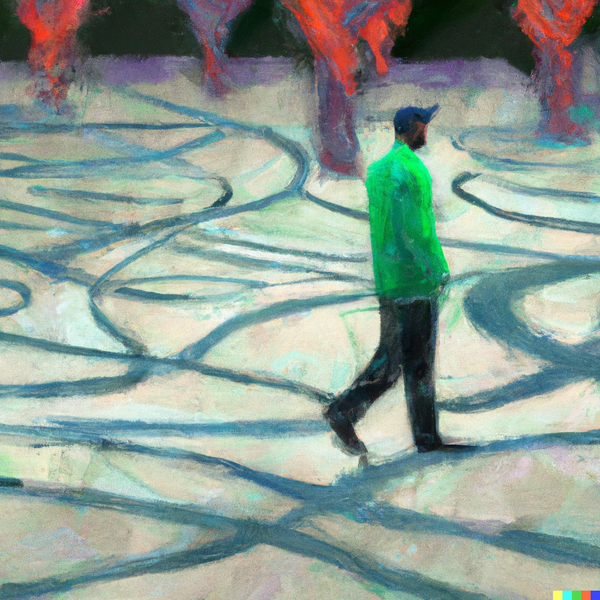the multiple languages of personhood

Upholding conceptions of difference in an “us” and “them” manner, under the guise of “culture”, creates room for parochial depictions of those we consider the “other”. This has been a typical stance when it comes to engagement of the global society with news from the Arab world, whose dominant religion, Islam, has been used as a synonym for oppression and fatalistic mindsets. The issue with terms like “Muslim women”, “Arab people”, and “Egyptian citizens” is that they conflate the similarities between the people those terms supposedly include, and by doing so, reduce them to one monolithic alien group that suffers the same issues, to the same extent, and would benefit from the same kind of solutions. Indeed, our conceptions of these groups often blur the lines between the individual and the wider community they exist in, and therefore, mistranslate their personhood, whose agency is stripped away in the process. I use the term "personhood" here to mean the status of being a possessor of certain qualities or attributes that are considered essential to human dignity, such as consciousness, self-awareness, rationality, and moral agency. Therefore, by analyzing two key texts, this essay aims to explore the role of acknowledging the existence of multiple versions of personhood, particularly in light of global notions of the Arab world.
To begin, I turn to the text “Do Muslim Women Really Need Saving?” by Lila Abu-Lughod in which she expounds on the sinister reasons for the shock on the global stage when Afghan women still chose to wear their veils after the U.S. supposedly “freed” them from the Taliban. This surprise certainly comes from an underlying sense that veiling is the wrong choice for any Afghan woman, just as organ transplants are an obvious solution to the kidney, liver, and cornea diseases of any Egyptian. Yet as Sherine Hamdy writes in her book, “Our bodies belong to God”, there are no moral principles common enough in Egypt to lead to straightforward ethical guidelines on what to do in the case of a transplant need. A simplistic view of these individuals’ worlds is not only inaccurate but also perpetuates harmful stereotypes that obscure their lives’ complexity and diversity, reducing them to mere objects of Western benevolence or pity. By acknowledging the multifaceted nature of the Arab world and its inhabitants, as expressed in Abu-Lughod’s and Hamdy’s texts, we can begin to appreciate these Afghan women’s and Egyptians’ unique experiences, aspirations, and challenges in their work towards creating more equitable and just societies for themselves. In this essay, I take both a microscopic and macroscopic view in dissecting some of the evidence that Egyptians and Afghans whose lives are discussed by Hamdy and Abu Lughod respectively are indeed negotiating for their individual and societal well-being as they navigate wider constraints and possibilities in their local politics and economics.
Lila Abu-Lughod offers a trenchant critique of the Western tendency to view Muslim women through a reductive and essentialized lens. Abu-Lughod argues that this approach obscures the fact that there may be different ideas about justice, and that “different women might want, or choose, different futures from what we envision as best” (788). This narrow view fails to acknowledge the complex ways in which Muslim women navigate cultural norms and power structures. Moreover, it reinforces the notion that the West has a moral obligation to rescue them from their supposed subjugation at the hands of misogynistic, also Muslim, men. Even after the “liberation” of Afghan women from the Taliban, by the United States, their choices and actions did not seem to conform to the Western feminist narrative but rather reflected their own aspirations to “reclaim their basic human rights and establish their role as equal citizens by participating in the rebuilding of their nation” (787). Western media, however, paid little attention to this positive exercise of these women’s choice-making but instead fixated on images of women in veils, particularly burqas, which were presented as symbols of oppression. Yet as Abu-Lughod notes, veiling itself is not necessarily a sign of a lack of agency.
Abu-Lughod debunks the common misconception that veiling was introduced to Afghan women by the Taliban. Rather, what the Taliban did was enforce a specific style of veiling on women throughout Afghanistan, in the name of “religious piety” (786). After the Taliban's rule, Afghan women were not faced with the binary choice of veiling or not veiling. Instead, they were able to make choices about the specific style of veiling that was appropriate for them based on their sense of morality, family honour, and social context. Abu-Lughod argues that the act of veiling is not inherently tyrannical, and in fact, can be a form of empowerment for women who are able to decide who will see their full face and who will not. She registers that veiling is for women who are “deeply committed to being moral and have a sense of honour tied to family. One of the ways they show their standing is by covering their faces in certain contexts. They decide for whom they feel it is appropriate to veil” (786). However, it is important to recognize that veiling is only one aspect of the complex experiences and decision-making processes of Afghan women. Reducing all the experiences of these women to one item of clothing risks oversimplifying the rich and diverse realities of their lives, particularly how much their values are intertwined with those of their community.
I propose, that the difficulty that some may have with understanding these choices, may arise from looking at it from our own individualistic perspectives. This is especially true for people who have no language for collectivism, people whose choices are simply made on the grounds of “I”, “me”, and “myself”. But that seems to not be the case for a lot of individuals, though not all, in this region. The absence of a strict focus on the individual in these communities does not, in any way, mean that the individual has no agency or that they have no understanding of their exercising of it. Hamdy's book “Our Bodies Belong to God” offers another perspective on the importance of acknowledging the agency of individuals in the Arab world, despite their deviation from the expectations set on what agency looks like in our own, more individualistic societies.
In her book, she challenges the notion that Egyptians who choose not to undergo transplants are doing so out of a lethal combination of fatalism and a lack of agency. Instead, she argues that this decision is a carefully considered choice, rooted in their beliefs about the sacredness of the body, which was lent to humans by God, and their understanding of the risks involved in the transplant process. By doing so, Hamdy highlights the role of social, economic, and political factors in shaping individual choices. She writes:
Many renal failure patients in this study, connected to the dialysis tubes keeping them alive, weighed risks against benefits as they watched the results of fellow patients who left the ward for the promises that a transplant might bring. Some of these transplant recipients, after their families scraped together all their savings to afford an organ, ended up with “failed” operations in which their bodies rejected the graft. (16)
This is why looking at the individual is too narrow of a view to understanding why it is that there is not even a systematized organ donor network in Egypt, a country that led advancements in medicine in this region in the early twentieth century.
For one, Hamdy argues that there is a widespread belief in Egypt that the body is sacred and should be treated with respect. Although these views originate from Egyptian Muslim scholars like Shaykh Sha‘rawi, they are not limited to only religious communities but are rather shared by other people too, across the country, regardless of their faith (3). Yet even among these people upholding that the body, and its parts, indeed belong to God, there is still ambivalence on whether that means one cannot at all try to save someone alive by offering them parts of someone who is dead, for instance. This is where the debate around whether or not brain death can be considered enough to harvest someone’s organs begins (3). Yet, as Hamdy notes, extraction from a living donor appears much more harmful to a majority of her interlocutors, especially when looked at under the reality that they too, are in the same environment that contributed to the given, say, kidney or liver failure. She writes, “Patients are keenly aware that biomedical outcomes cannot be convincingly attributed to bad genetic luck or their own individual behaviour” (13). She later expounds, “ I often heard them argue that they were loath to leave their loved ones “incomplete”—without an organ—in the same environment that made their own “complete” bodies ill” (16). Yet without situating individual situations in the wider political and economic contexts, one may be drawn to simply dismiss decisions not to get a transplant as fatalistic. By fatalistic, I mean, the belief that events are predetermined (often by God), and therefore inevitable and that we have little or no control over the course of our lives. Yet as seen in Hamdy’s text, that is certainly not the case.
By recognizing the complexity of individual decision-making in the Arab world, both Abu-Lughod and Hamdy push back against the Western tendency to view these societies through a simplistic and essentialized lens, one that ultimately serves to reinforce destructive stereotypes and reinforce the idea that the West has a moral obligation to rescue or “save” those in the Arab world who are deemed to be oppressed or in need of intervention. This typically also implies that these individuals are still “backward”, in a sense, because they are not even aware of how wrong their decisions are. This is often possible by ignoring the peculiarities of the lives of individuals in the Arab world and instead holding up reductionist notions of who they are, as a collective. Therefore, in this essay, I highlighted the dangers of doing so, particularly when it comes to engaging with stories about the challenges that women, children, and men of the Middle East face. One way anthropologists deal with this is by acknowledging that even terms like “Middle East” and “Arab World” already carry with them the conception that these people are one, simply by being in the same geographical area. And it is easy to get away with this ill-thinking because Islam is a widely shared religion in the region, so prejudices that fly under the radar of Islamophobia run wild, often unnoticed. Yet the effects that the individuals here face by not being taken seriously on the global stage call for the rest of the world to speak in a clear language that is informed by an appreciation of these individuals’ personhoods.
References
Abu-Lughod, L. (2002). “Do Muslim Women Really Need Saving? Anthropological Reflections on Cultural Relativism and its Others.” American Anthropologist, 104 (3), 783–790.
Hamdy, S. (2012) Our Bodies Belong to God: Organ Transplants, Islam, and the Struggle for Human Dignity in Egypt. Berkeley: University of California Press. 1–19; 141–207





